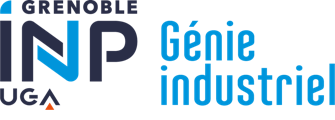Number of hours
- Lectures 24.0
- Projects -
- Tutorials 24.0
- Internship -
- Laboratory works -
- Written tests 1.5
ECTS
ECTS 6.0
Goal(s)
To deepen the knowledge of the functioning of circular systems from the point of view of engineering sciences and economics. The idea is to present several case studies concerning the circular economy and the constraints faced by the companies. The expected gains as well as the perverse negative impacts on companies will be discussed.
Content(s)
1) Introduction: presentation of global challenge cases and eco-circular scenario?
2) The economy of durable goods:
The analysis of durable good will look at the intertemporal problem that the circularity introduces and well as the quality issue and its impact on profits. The discussion of the ownership model will be discussed as well. A model of operational research may be used for illustration.
3) Cartography of logistic chains in different sectors with the analysis of competition between actors
4) LCA of circular goods
5) Circular business model
6) Game on circular strategy - role to be taken in the decision to be made, modeling of the value chains to be made
7) The brakes to circular innovation with a concept of capturing the value. Enablers and Accelerators
8) Circular rebound effect
9) Empirical analysis of willingness to pay for circular goods
We will do an experimental design for a particular product and try to run an econometric analysis to evaluate the profitability of circular product
10) Circular indicators
basic economics, introduction to circular economy
Exam (E) + 3-4 team or individual works (CC)
Mark final= (2/3) works + (1/3) Exam
E1-exam 1st session
E2-exam 2nd session
The exam is given in english only 
The course exists in the following branches:
- Curriculum - Engineer IPID apprentice program - Semester 9 (this course is given in english only
 )
) - Curriculum - Engineer student Master PD - Semester 9 (this course is given in english only
 )
) - Curriculum - Engineer student Master SCM - Semester 9 (this course is given in english only
 )
) - Curriculum - Master 2 GI SIE program major SPD - Semester 9 (this course is given in english only
 )
) - Curriculum - Master 2 GI GID major GOD - Semester 9 (this course is given in english only
 )
) - Curriculum - Master 2 GI GID major DPD - Semester 9 (this course is given in english only
 )
) - Curriculum - Master 2 GI SIE program major SOM - Semester 9 (this course is given in english only
 )
)
Course ID : 5GUC4302
Course language(s): 
You can find this course among all other courses.
- Hendel, I., & Lizzeri, A. (1999). Interfering with secondary markets. The Rand Journal of Economics, 1-21.
- Waldman, M. (2003). Durable goods theory for real world markets. Journal of Economic Perspectives, 17(1), 131-154
- Xiong, Y., Zhao, Q., & Zhou, Y. (2016). Manufacturer-remanufacturing vs supplier-remanufacturing in a closed-loop supply chain. International Journal of Production Economics, 176, 21-28.
- Weetman C. A circular Economy Handbook for Business and supply chains, Kogan Page ed, 2017
- Ross-Carré, Hervé. L’économie circulaire . AFNOR Editions, 2016.
- Johnson, J. P., & Waldman, M. (2003). Leasing, lemons, and buybacks. RAND Journal of Economics, 247-265.
- Agrawal, V. V., Ferguson, M., Toktay, L. B., & Thomas, V. M. (2012). Is leasing greener than selling?. Management Science, 58(3), 523-533.
- Urbinati, A., Chiaroni, D., & Chiesa, V. (2017). Towards a new taxonomy of circular economy business models. Journal of Cleaner Production, 168, 487-498.
- Ferasso, M., Beliaeva, T., Kraus, S., Clauss, T., & Ribeiro?Soriano, D. (2020). Circular economy business models: The state of research and avenues ahead. Business Strategy and the Environment, 29(8), 3006-3024
- de Sousa Jabbour, A. B. L., Luiz, J. V. R., Luiz, O. R., Jabbour, C. J. C., Ndubisi, N. O., de Oliveira, J. H. C., & Junior, F. H. (2019). Circular economy business models and operations management. Journal of cleaner production, 235, 1525-1539.
- Planing, P. (2015). Business model innovation in a circular economy reasons for non-acceptance of circular business models. Open journal of business model innovation, 1(11), 1-11.
- Ghoreishi, M., & Happonen, A. (2020, May). Key enablers for deploying artificial intelligence for circular economy embracing sustainable product design: Three case studies. In AIP conference proceedings (Vol. 2233, No. 1, p. 050008). AIP Publishing LL
- Manninen, K., Koskela, S., Antikainen, R., Bocken, N., Dahlbo, H., & Aminoff, A. (2018). Do circular economy business models capture intended environmental value propositions?. Journal of Cleaner Production, 171, 413-422.
- Pieroni, M. P., McAloone, T. C., & Pigosso, D. C. (2019). Business model innovation for circular economy and sustainability: A review of approaches. Journal of cleaner production, 215, 198-216.
- Zink, T., & Geyer, R. (2017). Circular economy rebound. Journal of Industrial Ecology, 21(3), 593-602Michaud, C., Joly, I., Llerena, D., & Lobasenko, V. (2017). Consumers' willingness to pay for sustainable and innovative products: a choice experiment with upgradeable products. International Journal of Sustainable Development, 20(1-2), 8-32.



